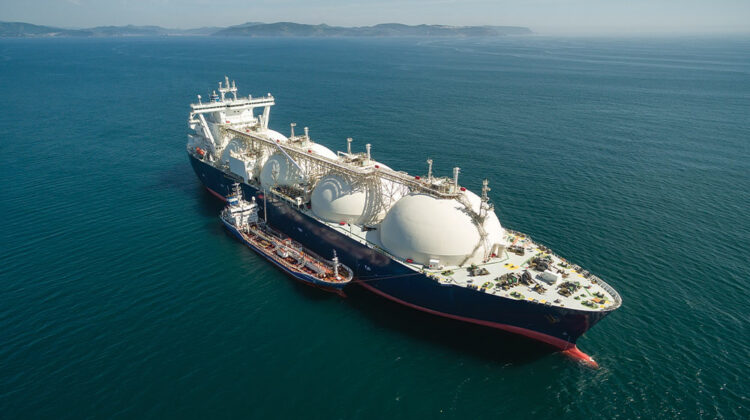
Oil bunker costs to double by 2035 on IMO rules, says Wartsila
NEW YORK : Oil-based bunker costs will double over the next decade due to the International Maritime Organization’s upcoming regulation on greenhouse gas emissions, Finland-based Wartsila’s CEO Hakan Agnevall told Platts while laying out a low-carbon fuel transition pathway for shipping.
Tasked with regulating cross-border maritime transportation, the UN agency in April voted for two sets of GHG intensity threshold for marine energy over 2028-2035 with punitive financial measures for ship operators failing to kickstart a low-carbon transition.
“It’s a complex framework,” Agnevall said in a recent interview. “The cost for operating on heavy fuel alone will basically double until 2035.”
Based on the IMO rules, which still need to be adopted by member states in October, shipping companies would need to pay $100/mtCO2e for missing the lower threshold and $380/mtCO2e for the higher.
Those who emit less than the lower threshold, generally by burning low-carbon fuels, could also generate carbon credits that can be sold to those who miss the higher threshold by sticking with conventional, oil-based fuels in another way for the latter to comply with the rules.
The regulation is “a major milestone for the whole shipping industry” and could be the world’s first global carbon surcharges on a sector’s emissions, said Agnevall, whose company is one of the world’s largest marine engineering firms.
“The critical thing is to create a level playing field between the fossil fuel and the green fuels … At least short term, it could probably lead to a stronger demand for biofuels.”
May’s average delivered bunker prices for very low sulfur fuel oil, the most common bunker type, were at $504.35/mt in Singapore, compared with $713.84/mtVLSFOe for B24 bioblend with 24% used cooking oil methyl ester and 76% VLSFO, according to the Platts(opens in a new tab) bunker cost calculator.
Data from classification society DNV shows 99% of the global fleet are currently conventional ships that can only burn biodiesel like UCOME and oil-based bunkers, though the proportion is forecast to fall in the coming years, with more ships designed to use alternative fuels hitting the waters.
Pathway
The IMO is expected to tighten the GHG standards for marine fuels further from 2035 for an eventual goal of net-zero shipping toward 2050, and Agnevall is seeing several new marine fuels emerging as plausible compliance options.
Biodiesel, bio-LNG, biomethanol and eMethanol could all become widely available from the early 2030s, before substantial renewable ammonia supplies come to existence in the second half of next decade, according to the CEO.
This means shipowners need to invest in multi-fuel capacities from now to avoid stranded assets, as a ship could be in operation for 25-30 years, Agnevall added.
“None of the green fuels is available in significant quantities. But shipowners still want to, kind of, derisk,” he said, adding, “If you build a vessel today, you know that during the lifetime of the vessel, some of these major [fuel] transitions will happen.”
DNV figures show 8% of the world’s ship order book are capable of being powered by LNG, 5% by methanol, 1.8% by LPG, and 0.5% by ammonia.
New technologies
Wartsila raised its spending on research and development to Eur296 million ($349 million), or 4.6% of net sales, in 2024, compared with a historical average of 3%. Agnevall said most of the expenses were related to decarbonization technologies.
The company was among the first to develop marine propulsion systems for LNG, LPG and methanol. In 2026, the Equinor-chartered, Eidesvik-owned Viking Energy will be retrofitted to be the world’s first ammonia-fueled platform supply ship with Wartsila’s engine.
While low-carbon fuels are expected to get greater adoption in the coming years and decades, Agnevall said oil and gas will remain in the bunker mix “for a considerable time,” and shipowners could use fuel efficiency and carbon capture equipment for decarbonization.
Oil and LNG will account for 56% of the world’s marine fuel consumption in 2050, albeit lower than 98% this year, according to S&P Global Commodity Insights’ Annual Strategic Workbook.
In May, Wartsila began marketing a scrubber system with carbon capture and storage technology, which has a capture rate of 70% and a cost of Eur50-Eur70/mt. This came after such a system was successfully installed on Solvang’s 21,000-cu m ethylene carrier Clipper Eris in February.
Agnevall suggested total CCS costs for shipowners would be higher due to handling and disposal expenses. Value Maritime, another developer of CCS-capable scrubbers backed by Shell, has an affiliate dealing with carbon management, but Agnevall said Wartsila had no plan to step into that area.
“The ecosystem needs to evolve,” he added. “We are a technology provider, and we focus on that.”
Source : PLATTS
